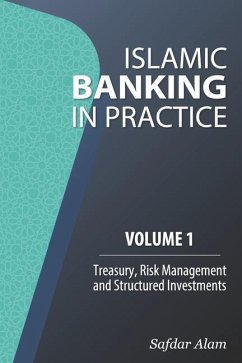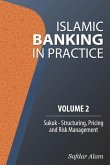This is How Islamic Banking Really Works In a sector where publications focus on theory and are rarely written by experienced practitioners, the Islamic Banking in Practice series concentrates firmly on market practice. The evolution of principles into practice is explained clearly and concisely. * How is a simple sale of metal used to deliver a total return swap? * How is are commodities bought and sold in order to create an fx forward? * How do Islamic banks hedge risk without the use of interest rate swaps? The reader is guided, step-by-step, as to how financial institutions create products, while ensuring compliance with Islamic commercial law. Written by a globally recognised practitioner, structuring and transactions are presented and explained in detail, covering * Structuring * Risk * Pricing * Documentation * Execution The Islamic Banking in Practice series will cover the following areas: Volume 1 Liquidity, Risk Management and Structured Investments Volume 2 Sukuk (now also available as E-Book and paperback on Amazon) Volume 3 Retail Banking, Financing and Investments Volume 4 A detailed evaluation of the industry REVIEW "This is a book written by a practitioner in Islamic Finance, Safdar Alam, about what many would consider to be quite a dry topic, that of Islamic Banking. In fact, that is quite simply not the case. This is a book as the author describes it as "A download of what I have done and what I know.". From its very outset, this first volume, which tackles money market, FX and other market contracts, gives the view of a pioneer in the industry who was challenged with a blank sheet of paper and asked to create something from the ground up, without any guidance, without a frame of reference and the minimum of support infrastructure. The story that unfolds is very readable. The book captures the imagination vividly of what it was really like in this industry less than 20 years ago, when the pioneering spirit of a few created the global industry that we now see today. This is about as real as it gets because there is a very big difference between creating something yourself and replicating something that has already been created. The author, in both a logical and engaging fashion takes us through this journey and shares his insights "warts and all" of what it took to do the needful. I would consider this book as essential reading for practitioners, students, academics and anyone who shares an interest in finding out how something new is created from the ground up. I, for one, eagerly await the sequel in Volume 2 on Sukuk." By Daud Vicary Abdullah Managing Director of DVA Consulting and former President and CEO of INCEIF The Global University of Islamic Finance
Bitte wählen Sie Ihr Anliegen aus.
Rechnungen
Retourenschein anfordern
Bestellstatus
Storno








